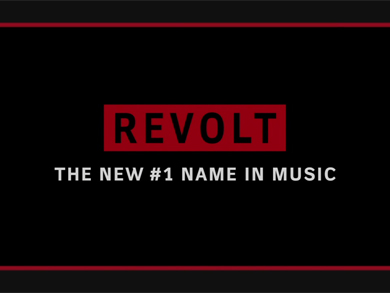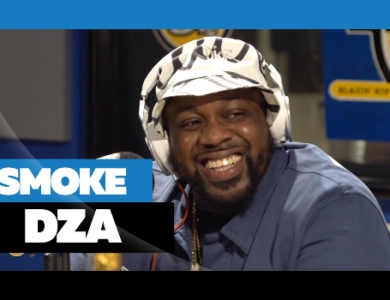
Twice in the past four years, during the darkest days of the recession, unionized auto workers made major concessions to help Detroit’s Big Three automakers stave off collapse. Since then, Ford, Chrysler and General Motors have amassed larger profits than anytime in many years. Yet the concessions remain, a relic of more desperate times.
@funkmasterflex
The United Auto Workers — decades ago one of the most powerful American unions but now vastly diminished — is gearing up to renegotiate its contract this coming fall. One question hangs over the assembly line: Will the union be able to increase its share of the profits?
Every four years, UAW leaders sit down with the companies to renegotiate pay, benefits and many other facets of working life. The coming talks, experts say, will be more complex than any in recent memory.
In 2007, workers agreed to a two-tier wage system where new hires would earn just half the wages of older workers. In 2009, with bankruptcy at American automakers looming, the union agreed to further pay and benefit cuts. At Chrysler and GM, union workers gave up the right to strike until 2015 — but not at Ford, which managed to avoid bankruptcy. While the companies want to remain profitable in a still-fragile economy and the UAW wants to reverse a decades long decline in membership and power, union workers — battered through the tides of the Great Recession — also want the money and job security they feel is owed them.
“This is what our hopes are pinned on: to get back some of the things we gave up. GM is making a profit right now,” said Orval Plumlee, the president of UAW local 2209 in Indiana and an autoworker for 33 years. “We think it would only be right to share in that profit. Whether that is what’s going to happen, only God knows.”
Plumlee’s uncertainty, experts say, is justified. There will almost certainly have to be profit sharing at some level — indeed, all three companies have already awarded profit-sharing bonuses to their employees. But how much remains unknown. And, critically, the two-tier system, which many view as divisive in the workplace and antithetical to the very notion of unionism, remains unlikely to be altered, experts say.
The fact remains that the question of profit-sharing at the table this fall cannot be divorced from the union’s declining power and membership. In 1979, UAW membership peaked at a little over 1.5 million. In 2010, there were just 376,612 members, according to the UAW.
“What this all means is that UAW can no longer do what it used to do: set the pattern for wages.” said labor historian Nelson Lichtenstein, who wrote a biography of Walter Reuther, one of the most influential UAW leaders in the union’s history.
“[UAW] President King is as good as this generation has. But something has happened to him that is beyond his control and beyond the control of any union leader,” Lichtenstein said. “It used to be that what the UAW did had an impact on the rest of the industry. And now that’s not the case.”
In an interview with The Huffington Post, UAW President Bob King stressed his willingness to cooperate with the companies.
“We came through a really hard time. People had to pull together. There were sacrifices made across the board,” King said. “We’re looking for creative ways to share in the new productivity. We’ve shown the ability in the relationship [with the automakers] to find solutions to issues that benefit our membership and also the companies.”
But many argue that he doesn’t have much of an alternative to cooperation. There are already certain restrictions built into the negotiations. Employees can’t strike at Chrysler and GM — which alters the very structure of bargaining — and many of the 2009 concessions remain frozen until 2015.
“[UAW President Bob King] will try to get a good contract, and maybe he will get a good contract, but that’s only going to have a very marginal impact. This is not a criticism of him, but it’s the structure of the situation. He’s in a box,” said Lichtenstein.
GM was more profitable last year than any year since 1999; Ford’s first quarter this year was its most profitable since 1998.
“It’s very difficult to talk about an agreement that doesn’t go back to the old ways for members that are seeing large profits being posted and wanting their own share of that,” said Kristin Dziczek, Director of the Labor and Industry Group at the Center for Automotive Research. “What the companies want to do is structure that sharing so that they’re not locked into paying that rate when there are no more profits in the industry. The unions want the profit sharing to be a steady increase in the lifestyles of their members — that’s what unions do.”
Unless the union is somehow able to recover their concessions, experts anticipate a continued reduction in the rewards of making cars — a slide now decades in the works. Despite the tough physical labor the job entailed, a union job in auto manufacturing was once one of the best jobs a blue collar worker could get at $28 dollars an hour with excellent retirement benefits.
“What’s at stake? When I moved to Detroit 37 years ago, working at one of the plants was considered a very good job,” said Jane Slaughter, an author who has covered the UAW for decades and a current staff writer at Labor Notes, a non-profit media organization that advocates for the revitalization of labor. “So that is the big question on the table: Is the union going to fight to make these good jobs again, or is it going to let these jobs stay terrible jobs?”
‘AN ENORMOUS CANCER EATING AWAY’
The two-tier system, officially referred to as “entry rate” because workers are able to move up through the system through attrition, means that two workers next to each other on the assembly line make vastly different money to do the same job. Union members complain that this concept undermines the very point of union representation: the collective spirit that holds the organization together.
Mike Parker, a UAW member since 1978 who took a buyout from Chrysler in 2007, is among those who think that the single highest stake in negotiations with the automakers is changing the two-tier system — and he doesn’t think that either the union or the companies have an appetite to fundamentally alter the structure.
“The two-tier system is an enormous cancer eating away in any union. It essentially says that you can’t build solidarity in the workplace,” Parker said.
At GM and Chrysler, the two-tier system cannot be changed until the next contract negotiations in 2015, according to the agreement made during bankruptcy restructuring.
“Nobody likes the two-tier system,” King said. But non-union foreign manufacturers in the United States “have terrible two-tier systems.”
“That really puts the competitive pressures on us to save [GM, Chrysler and Ford] and keep them viable.” King said. “So we know that we have to both get our membership a fair share, raise the entry level and also be aware of the competitive pressures we have to deal with.”
Despite his acknowledgment that the two-tier system has problems, critics say that King won’t change it — in 2015 or later.
“Bob has supported a number of good causes that make him really stand out from prior UAW presidents, but to me that’s really frosting on the cake. The question is what is he going to do to maintain some power for blue collar workers — and in that regard, he’s really committed to the two-tier system,” said Slaughter, who reported a union members opposition to the pay system at UAW’s March bargaining convention in a recent piece for Labor Notes.
Nick Waum, 31, began working for GM at a temporary worker in 2006. He was hired with the contract in 2007 and was lucky enough to be among the group who makes $28 an hour. He described the two-tier system as a “no win situation.”
At the plant he works at in Ohio, he has observed firsthand the difficulties that a two-tier system produces.
“There are people who are bitter and upset and they think that they’ve been discriminated against when they’ve worked just as hard as we do, doing the same jobs for half the pay,” Waum said. “I’ve seen fistfights break out on the line. I’ve seen people at the lower wage just walk off and quit. I’ve seen differences in quality that i didn’t see before the tiered wages.”
Many point to the ways that the two-tier system might hurt efforts to organize non-union workers.
“The question is: who it is that you want to organize?” said Parker. “If your aim is to organize the unorganized portion of the industry, the only way that’s going to happen is if a part of the membership goes to these plants and explains how the union is a great thing. People need to hear that. It can’t just be: We just gave up everything we’ve ever won.”
THE CHALLENGES OF DECLINE
Even if the union gets everything they ask for, some labor experts say it won’t be enough to reverse the union’s decades long year decline in membership and influence.
From the years following the Second World War until the late seventies, the UAW was one of the most powerful and influential labor unions in America. But in 2009, union members made up just 18.3 percent of the auto industry (both automobile and car parts manufacturing), according to unionstats.com, an independent site that uses government statistics to compile their data. In 1983, the last year this type of data is available, union members made up nearly 60 percent of the industry.
King, keenly aware of these statistics, said the union’s top priority is organizing new members.
The problem is that we now have so many non-union employees [in the auto industry],” King said. “The only way to do true justice to workers is to reorganize the entire industry. So, then, across the industry you can deal with this. Because then you’re able to say to the employer: We guarantee that your competition is going to do the same thing.”
The UAW has not been able to say that for many years. To some extent, the drastic drop in the UAW’s power and influence represents a decline in employment in the industry overall — particularly in the last four years. But experts point to two other critical factors that have chipped away at UAW dominance within the industry: the rise of foreign car manufacturer’s non-union plants in the south and the outsourcing of parts manufacturing to non-union companies.
Membership has increased slightly during King’s first year of leadership — according to the UAW’s filing to the U.S. Department of Labor, from 2009 to 2010, membership increased by 21,000 workers. But the majority of that share of new members comes from the UAW’s expansion outside the auto industry into sectors like casinos and higher education. King said that he is focusing his organizing efforts on the foreign manufacturers’ factories, called “transplants” by the union. But these factories haven’t been organized in 30 years, and critics argue this particularly weak moment is unlikely to change that status quo.
In the interview, King talked about the political forces working against the UAW and American unionism more generally. The decline of the UAW cannot be separated, historians say, from the overall disappearance of union jobs in America over the last several decades. Likewise, the decline in popular support for unions and a rising political movement against organized labor across all industries have seriously hampered the UAW’s struggle to maintain power and influence. The bailouts of Chrysler and GM were massively unpopular with the public, with many placing blame squarely on the UAW. Now much of that anti-union sentiment has since shifted to public sector employees.
“It is a critical time for labor. I think that the extremist attack on collective bargaining and the middle class can create an opportunity for social justice,” King said, referencing the anti-union bills pressed by cash-strapped governors across the midwest and other once powerful union states.
King has been lauded for his commitment to social justice. Upon his appointment last summer, former New York Times columnist Bob Herbert praised King as “unabashedly idealistic” and part of “a new activism on labor’s part.” But labor historians and union members worry that that idealism may not be enough to halt the union’s downward slide.
“What’s at stake in these negotiations? It’s the possibility of becoming stronger,” Lichtenstein said. The public’s perception of the UAW, Lichtenstein added, is a looming hurtle in that fight. “It’s unthinking but widespread: The problem with the American auto industry is high paid workers. That’s a tremendous public perception out there that’s negative. Almost anything that the UAW does that can be portrayed as a victory, on this regard, will be good.”












